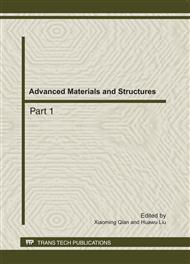p.44
p.49
p.54
p.58
p.63
p.69
p.74
p.80
p.86
Study on the Precipitation Behavior of the Drill Pipe Steel Microalloyed with Nb
Abstract:
A new drill pipe steel microalloyed with 0.04 w.t.% Nb was designed to meet the needs of drilling operation in super-deep wells, and the precipitation behavior of Nb during temper was studied in detail. The results show the austenitic grain can be refined by the addition of 0.04 w.t.% Nb, and the steel has a high yield strength of 1192MPa, high tensile strength of 1226MPa and high impact absorbing energy of 137J when the steel is quenched at 900°C and tempered at 550°C, moreover, the volume fraction and dimension of precipitates increases with increasing temper temperature. When the new steel is tempered at 550°C, the new steel has the best comprehensive performance due to the fine dispersed precipitates. The mechanical properties of the new steel are much better than that of the common drill pipe steel.
Info:
Periodical:
Pages:
63-68
Citation:
Online since:
September 2011
Authors:
Keywords:
Price:
Сopyright:
© 2011 Trans Tech Publications Ltd. All Rights Reserved
Share:
Citation:


